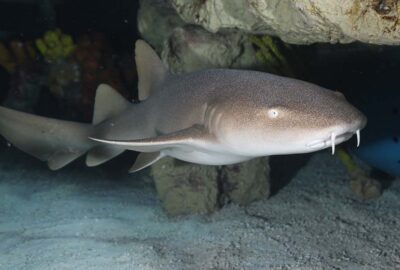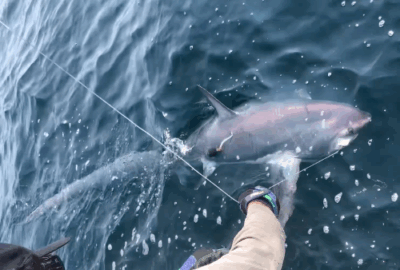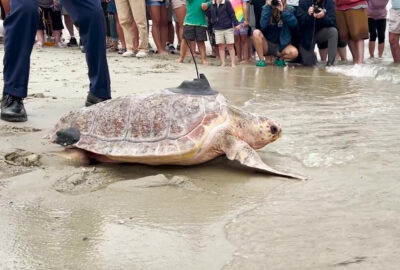Construction Update: As we enhance the look and feel of the Aquarium and make structural improvements to the penguin exhibit, some exhibits are temporarily closed, and the penguins are off exhibit until February 13. Learn more.
The Trust Family Foundation Shark and Ray Touch Tank will be closed from January 5 to January 6.
So Many Dolphins, So Little Time!
A total of 903 dolphins and two whales were spotted in less than four hours during an aerial survey of the Northeast Canyons and Seamounts Marine National Monument.
By New England Aquarium on Thursday, September 19, 2019

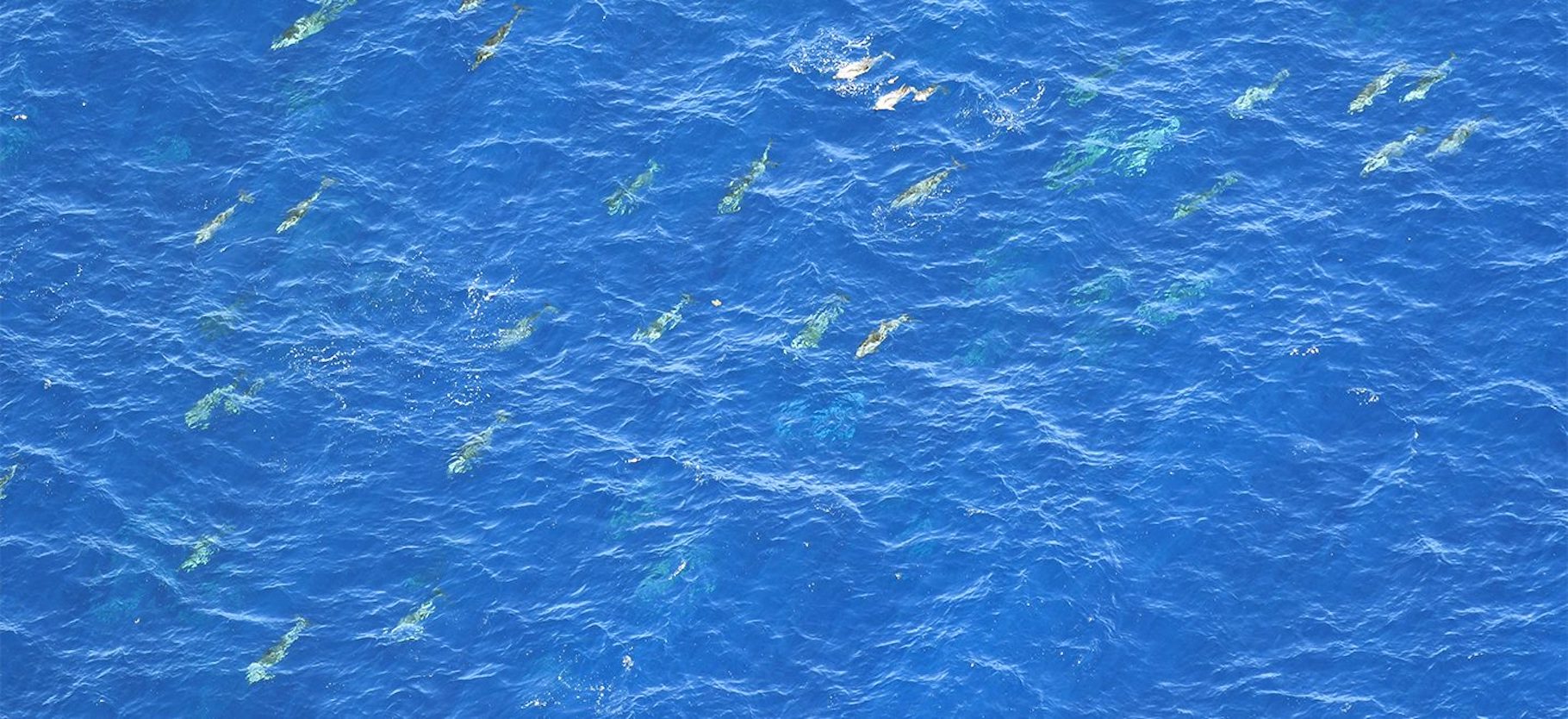
It has been a challenging season for aerial surveys. Some say the third time is the charm. But in our case, it took four attempts to complete a survey of the marine monument. This year, sea fog was a major challenge because it persisted throughout the summer. However, after three unsuccessful attempts over the past few months, the forecast looked promising on August 30. And it turned out that for us, the fourth time was a charm.
And what a survey it was! We saw more than 900 dolphins and two whales during our three-hour-plus survey.
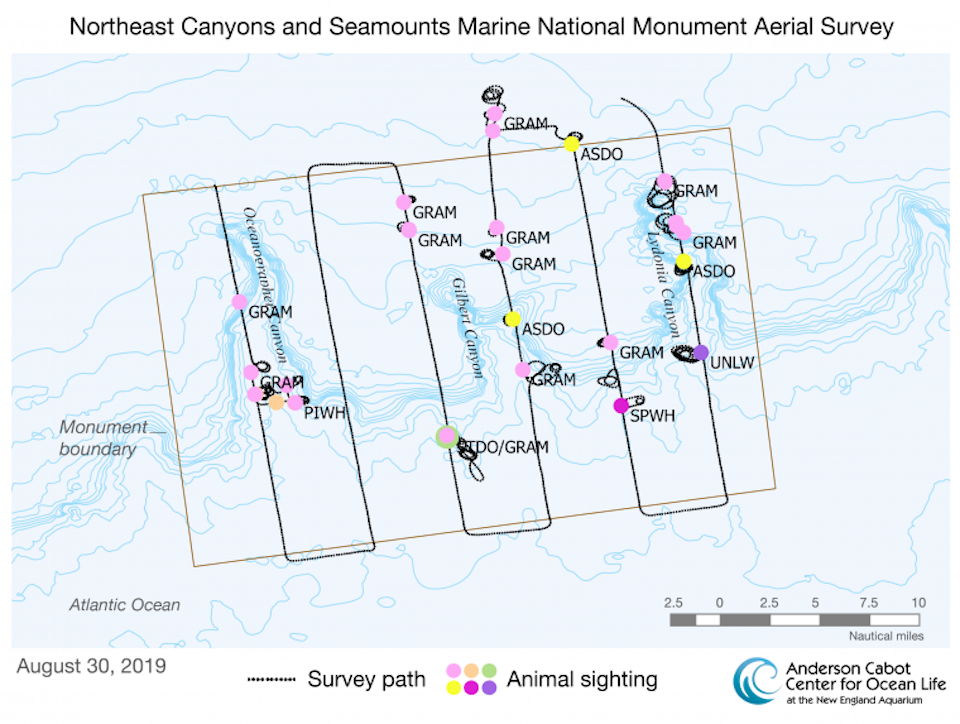
A Day in the Air
Our crew assembled at Chatham Airport: two professional pilots—Trevor Laue and Bob Strakele from Avwatch—and two scientists—Ester Quintana and Orla O’Brien from the Anderson Cabot Center for Ocean Life at the New England Aquarium. While as scientists we tend not to be superstitious, given our recent history with surveys, we decided to eschew our standard preflight team photo, labeling it as “bad luck.” After a safety briefing with all crew present, we climbed into the plane and took off at 9:19 a.m. Due to a hefty tail wind, we cruised out to the survey site at 165 knots and arrived an hour later. We slowed down to our survey speed of 100 knots and began our first trackline.
The first trackline started off promising. The team sighted several groups of Risso’s dolphins (Grampus griseus) and a small group of Atlantic spotted dolphins (Stenella frontalis). About halfway down the survey line, the team saw the first blow of a large whale.
The plane broke track, but as we flew over, the whale disappeared from sight—still too far to identify. The only sign left was a red patch of poop at the surface. Someone saw what looked like the hump of a sperm whale as it went down. But after circling the spot for 10 minutes without re-sighting the whale, we cut our losses and returned to track.
Ten to 12 minutes is the maximum amount of time that the team can spend per sighting because of fuel limitations in this type of offshore survey. Also, if this was a sperm whale, they can hold their breath for up to 90 minutes!
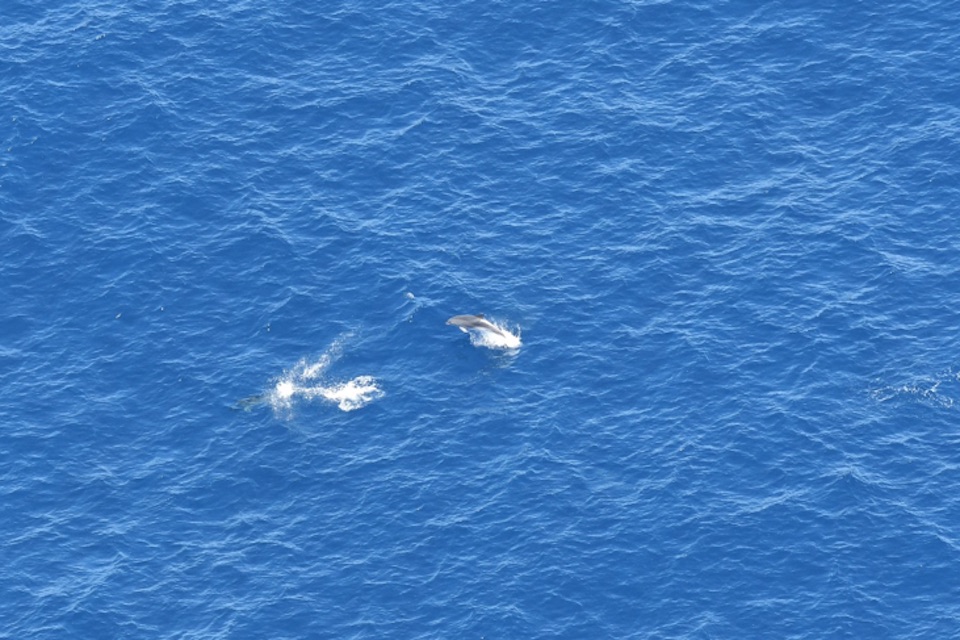
On our second line, the plane quickly broke track again, this time for a confirmed sperm whale sighting. This whale was about four nautical miles from the whale on the previous line. While it is fun to imagine it might have been the same animal, the truth is that the slopes of the canyons are perfect habitat for sperm whales. As the largest toothed whale and an endangered species, it is possible that many of them are involved on deep dives as the plane flies over.
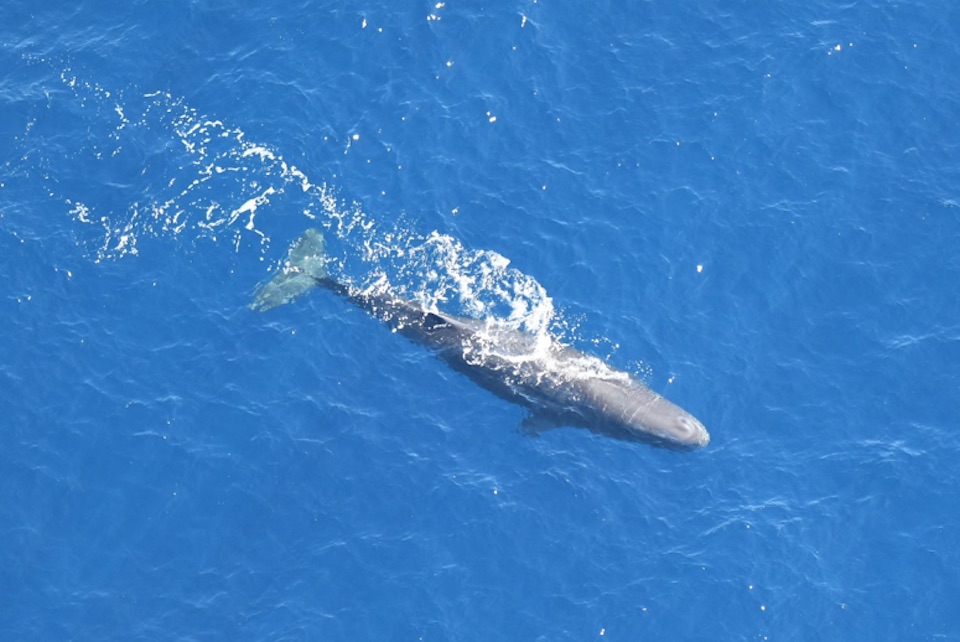
The next two lines were a flurry of dolphins. The team spotted group after group of Atlantic spotted dolphins and Risso’s dolphins. A big surprise came about three minutes into our fourth line. The plane broke track for what appeared to be a long line of Risso’s dolphins. Since the dolphins were spread out, our pilots implemented a corkscrew maneuver, circling each subgroup individually so the team could count them. The first subgroups were small (less than 30) and included Rissos’s dolphins. The last subgroup was significantly larger and included a new species for our surveys—striped dolphins (Stenella coeruleoalba)!
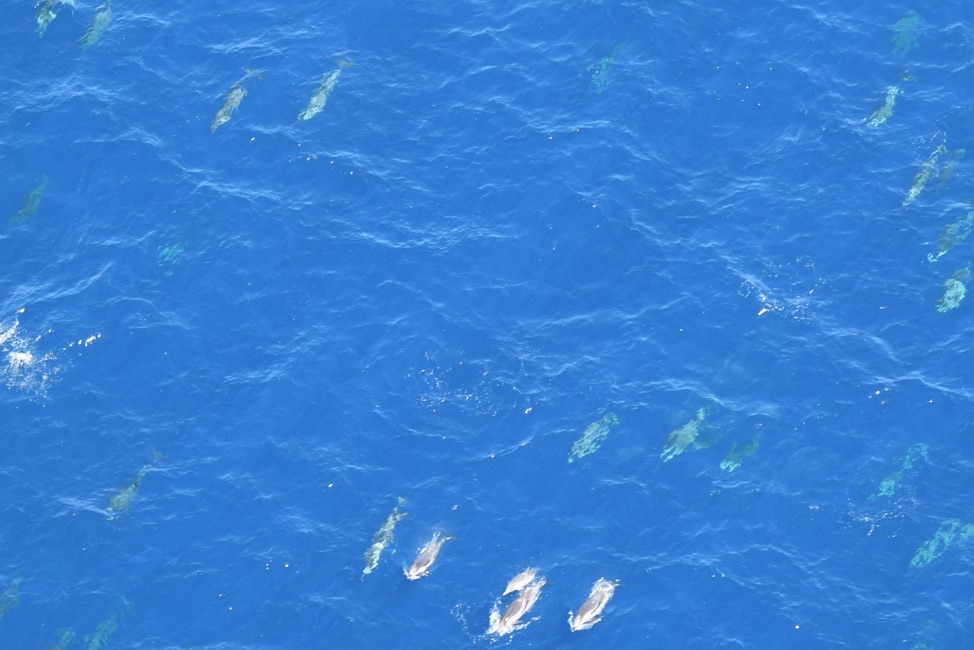
In total, this sighting included 462 Risso’s and striped dolphins, including some calves. The subgroups were traveling west through the monument at a good clip. Striped dolphins are an offshore species usually seen on the continental shelf edge and near the northern edge of the Gulf Stream. This was an especially exciting sighting because everyone in the plane got to check this species off their “life list.”
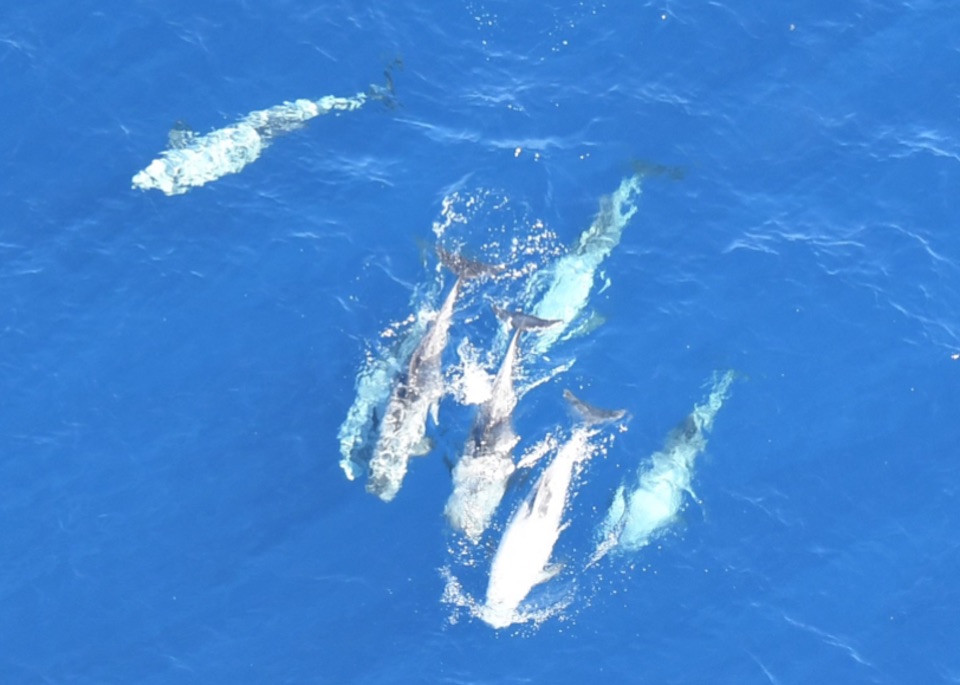
After the excitement of the striped dolphins, things were quiet as we traversed the line furthest from any canyons. Yet, on the last line, things heated up again as the plane flew over the Oceanographer Canyon—an undersea canyon more than 1,000 meters deep. This is about as deep as the Grand Canyon.
The plane broke track for another group of Risso’s dolphins, but this one included a fun surprise—pilot whales! Pilot whales (Globicephalus sp.) are a fan favorite in the survey plane. They tend to be social, active, and fun to photograph. We saw three small groups of pilot whales traveling close together. This grouping is common; pilot whales live in small family units or pods, and the pods will travel in larger groups together. Our team finished off the day with a few more Risso’s dolphin sightings.
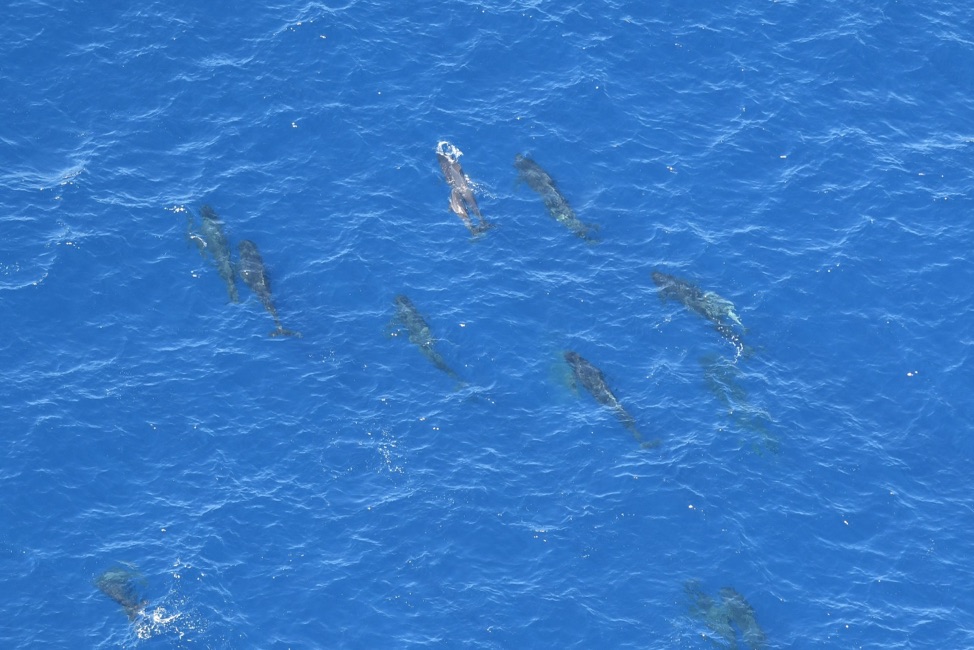
On this survey, no other species of marine megafauna were sighted, which was very uncommon. The team did record the presence of human activity, including fishing gear and fishing vessels inside the monument. The fishing gear was more abundant and spread throughout the monument than in previous surveys. In the past, the gear was common in the outer survey lines. The presence of fishing gear inside this protected area is something that we will be paying attention to in future surveys.
The survey ended at 1:49 p.m., and not a moment too soon. The wind started to pick up, making sighting conditions difficult. It seemed our luck had held out just long enough to complete the survey. The team landed in Chatham at 2:45 p.m., and everyone went home to spend the Labor Day Weekend thinking about dolphins and whales.
Every survey of the marine monument is unique. On this survey, we saw striped dolphins for the first time. What will we see in the fall survey? Follow the Anderson Cabot Center Facebook page for future updates.
The New England Aquarium’s aerial surveys of the Northeast Canyons and Seamounts Marine National Monument are possible due to the generous support of Conservation Law Foundation, National Ocean Protection Coalition, Natural Resources Defense Council, and Resources Legacy Fund.

